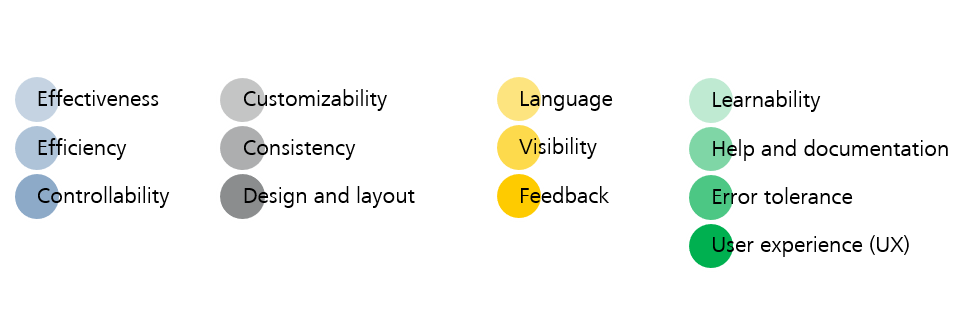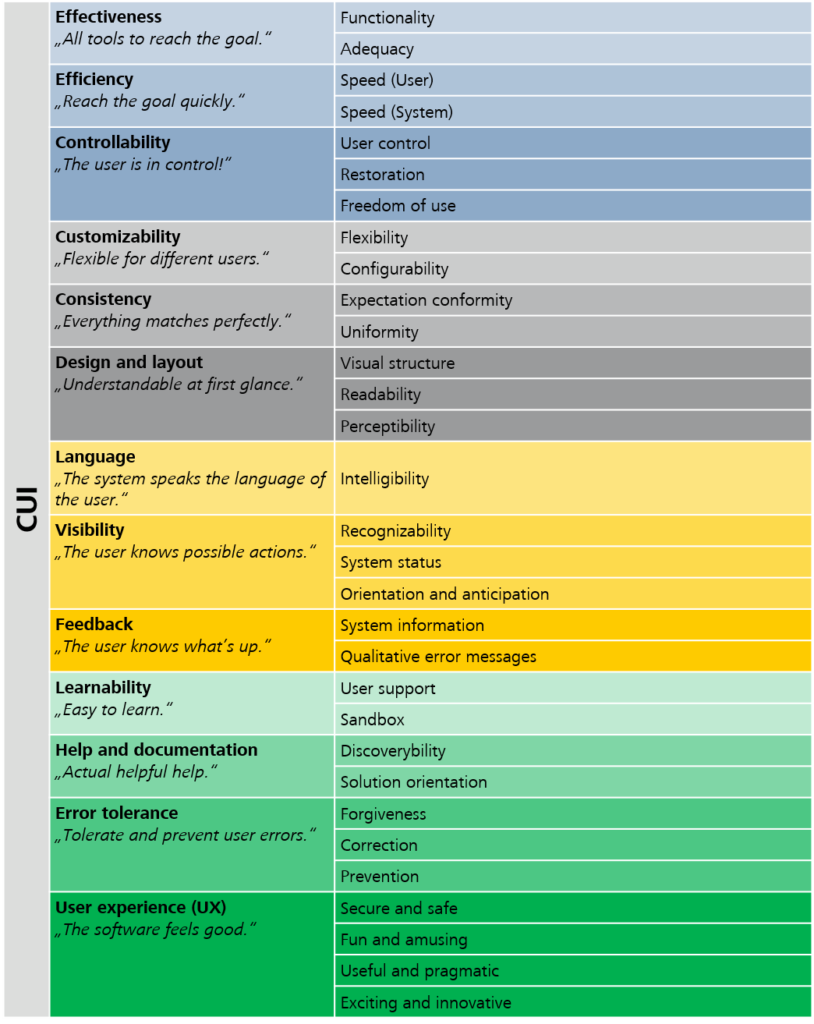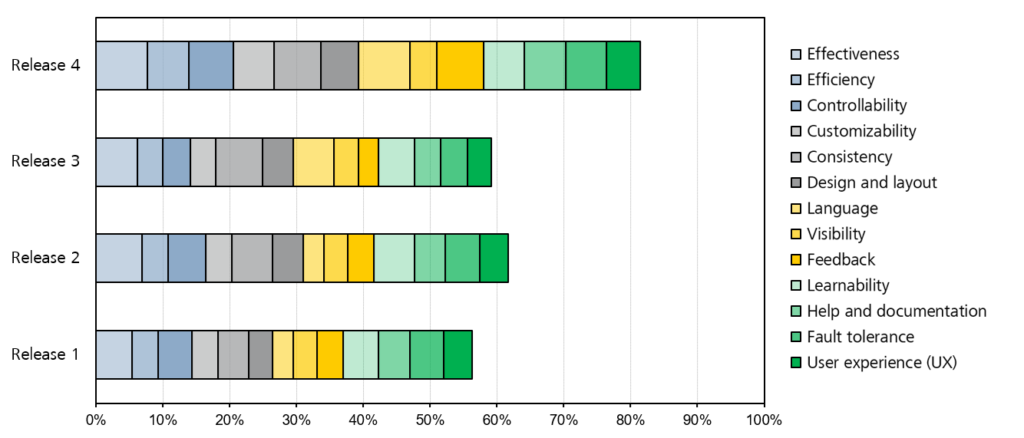The problem: Making usability comprehensible and transparent
How is the usability of my software? At the latest, this question will arise by the time the actual users first see the application. Often, this is when you notice that the planned software is not really optimally tailored for the end users. However, it is usually too late to make major changes at this point. Subsequent problems such as poor acceptance or even the failure of the software project have been confirmed by numerous studies. Approaches like “user-centered design” that put the user at the center of attention of the development process show just how beneficial such involvement and the consideration of usability at an early stage can be. The core problem that persists, however, is the difficulty of making usability comprehensible. This blog post presents a possible solution.
The idea: The Custom Usability Index
The Custom Usability Index (CUI) is an index that measures the degree of achievement of the usability of computer software at the current project stage.
The basis: 13 design principles
The index represents the aggregated rating of 31 criteria allocated to 13 categories. The categories are based on design principles developed in-house that are in turn based on ISO standards and the state-of-the-art literature on usability.

At the start of each project, stakeholders can weight the categories listed above according to their individual requirements, and thereby specify priorities.
The evaluation: Where the magic happens
As each project is unique, it is important to specify at the start of a project when a criterion has reached the best possible usability. To gain a uniform understanding of the required target state that the application is to achieve with respect to the respective criteria, it is advisable to involve the entire team, including the stakeholders involved, in the definition. The fact that both sides are made aware of the issue of usability is a positive side effect.
The actual evaluation of the criteria is done by means of specific usability test methods. The tests have to be done on the sub-product on a regular basis throughout the course of the project. A criterion is given the highest rating in the assessment only if the previously defined target state has been achieved 100%. The final CUI value then reflects the weighted average rating of the 13 categories.

The result: Usability brings happiness
Measuring the CUI at regular intervals makes usability transparent both for the team and all the stakeholders. The current status of the software in each of the categories is apparent at all times, as are any issues that may still require improvement.

The example above shows continuous improvement in usability up until release 2. Release 3, however, brought a deterioration. By identifying the categories affected, it was possible to remedy the issue immediately during development. The result becomes apparent in the significant increase in usability in release 4.
The CUI presented in this blog post provides a possibility to measure the usability of software throughout the development process, and to make it transparent for all the parties involved in the project. The high level of transparency and the stakeholders’ awareness of usability in general constitute a distinctive quality feature of the software.